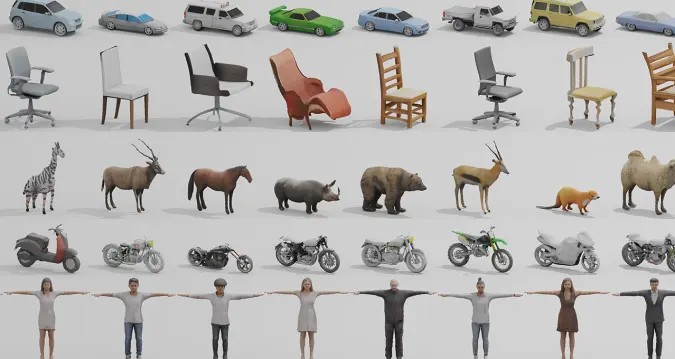
New AI Model Creates 3D Objects and Characters for Virtual Game Worlds
During the last decade, one of the biggest issues in the gaming industry is the explosive growth of the AAA video games production cost. In 2000 a dozen people could make a big PlayStation hit. Today, a new iteration of any console or PC game franchise requires hundreds of artists, designers and programmers working for several years. Even casual games, like hidden objects or puzzles, are taking many months to make from concept to release to Apple App Store or Google Play.
One of the biggest costs in game production is asset creation. Players want their games’ content to be not only entertaining but unique. The character’s models, textures, skins, exotic locations, various in-game power-ups, all have to be carefully customized, refined, labored over by artists, which is incredibly expensive.
Another problem is scaling. Game studios need to release many DLC updates and asset packs to remain competitive. This is especially relevant today, when the monetization trends all switch to in-app purchases, like character skins, accessories, vehicles, emotes and cards. The talent is scarce, and one of the solutions is employing game art outsourcing studios from low-wage locations, but it is not an easy task to find a reliable one and build a long term collaboration.
That's why the studios are always on the look-up for technologies that could help bring down the cost of game development. Recent advances in the neural image generation models, like DALL-E, MidJourney and StableDiffusion, bring some hope that the realization of this dream may be not so far away.
Enter GET3D from Nvidia, the latest entry in this field, announced in a recent post here This AI model was trained using only 2D images and is able to generate 3D shapes with high-fidelity textures and complex geometric details. The range of the objects that can be created is quite wide: vehicles, characters, animals, people, buildings, various outdoor spaces which could be combined into entire cities with their dwellers. The export formats are suitable for the most popular graphics software, allowing for easy importing of the shapes into 3D renderers and game engines, and can be smoothly built in the existing art production workflows.
How close are we to actually implementing this and similar models into real world game development? “The technology is very impressive and we are certain to see a lot of generated art assets in the games soon. They will not replace a creative team of human artists, though, not in the foreseeable future, as the AI still requires a well thought-out input to produce good results, and careful post-production work to make it consistent and polished”, according to an expert opinion from Absolutist game art studio. It seems, as in many other fields, in game dev the machine learning applications appear to be very effective assistants to artists and designers, rather than a substitute for human creativity and skill.
